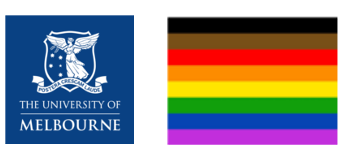LGBTIQ+ Inclusive Practice Guide for Homelessness and Housing Sectors in Australia
Funded by theNational LGBTI Health Alliance and Pride Foundation Austral
Funded by theNational LGBTI Health Alliance and Pride Foundation Austral
This document outlines guidance on inclusive practice for agencies in Australian homelessness and housing sectors working with clients who identify as lesbian, gay, bisexual, transgender, intersex, and queer or questioning (LGBTIQ+). This has been prepared in response to requests from these sectors, as well as clear research and practice evidence that LGBTIQ+ people are at higher risk of homelessness and have specific needs to address. This guide is intended to be applicable to housing and homelessness services across Australia; and to provide a practical set of principles for staff at all levels to implement systems and cultural change, as well as to serve as a source of useful information for people in the LGBTIQ+ community who are or might be accessing these services.
It must be emphasised that there is much diversity within ‘the LGBTIQ+ community’; and that multiple marginalised identities – concerning sexuality, gender, physical and cognitive ability, race, ethnicity, religion, class, age, and so on – intersect to impact in various and unique ways on lived experience, including but not limited to experiences of stigma, discrimination, and oppression. This understanding is relevant to all topics covered in this guide. It is important that staff, including those who work with people who have intersectional identities and experiences, understand the guide and adopt an intersectional approach as part of their practice in service provision. In specifying the experiences of some groups in the guide, it is important to acknowledge that these groups are also intersectional, and that there are many more which have not been discussed
The guide is divided into two main sections. Section 1 provides content that is aimed primarily at staff who are in direct contact with LGBTIQ+ clients and tenants (or applicants). This maps onto the Rainbow Tick Standards (GLHV@ARCSHS 2016) for creating a welcoming and accessible organisation, disclosure and documentation, and culturally safe and acceptable services. Section 2 contains information that is more relevant for service managers and relates to the Rainbow Tick Standards of organisational capability and culture, workforce development, consumer participation, disclosure and documentation, and culturally safe and acceptable services. The authors recognise the imperative of meeting other reporting requirements and quality assurance standards for housing and homelessness services, as well as differences between the housing and homelessness sectors.
We acknowledge some challenges, furthermore, with respect to implementing aspects of the guide across states and territories in Australia, which are detailed in the Conclusion. Increased funding and resources from State/Territory and Commonwealth governments are recommended to address these. Further background information about LGBTIQ+ homelessness is provided in Appendix 1. The definition of homelessness used here, and the process of developing the guide, are discussed in Appendix 2. More information and resources – including factsheets for different sections of the guide, and an online version – are available by clicking the links at the top of this page.
